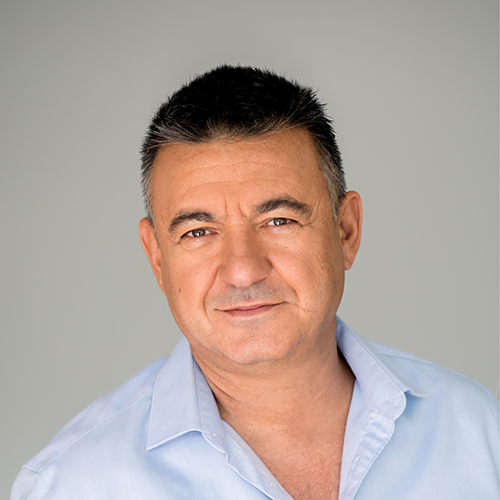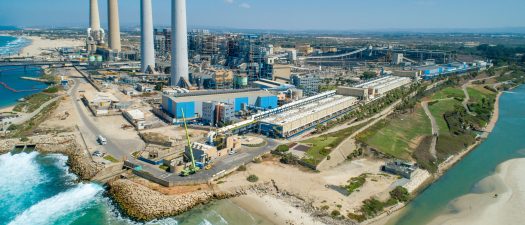Israel is a small state with a single coastline, and 7 mega-size desalination plants built or planned along this strip of coast, for a length of approximately 200 km, currently producing some 80% of.
Seawater Intake Pipe Clean – Shock Chlorination vs. Pigging

When designing a new SWRO plant, the question arises regarding how to keep the seawater intake pipe clean – shock chlorination vs. pigging.
Many have discussed the need to chlorinate the seawater intake pipes for an SWRO plant to prevent marine growth and the growth of barnacles, which decreases the cross-section area of the seawater intake pipe.
This blog looks at the benefits of pigging vs. shock chlorination in the operation of large SWRO plants, with seawater that is not chlorinated and disinfected.
 What are the benefits of pigging vs. shock chlorination in the operation of large SWRO plants
What are the benefits of pigging vs. shock chlorination in the operation of large SWRO plants
The process of marine organism growth on the marine pipe is not too complicated. The seashells start their life as larva. The larva drifts in the water and reaches the intake suction head and the pipe. In general, the larva will prefer to sit on the beginning of the pipe where there is still some light, but some species of seashell can exist in almost no light at all. The seashell in the state of larva doesn’t endanger the operation of the plant; however, once the seashell finds a suitable spot, it attaches to the pipe surface, starts to build its calcium carbonate shell, and then undergoes metamorphosis into a juvenile barnacle.
The barnacle will usually attach next to other barnacles to build a colony of barnacles. The conventional treatment to prevent barnacles from starting growing is shock chlorination. The shock can be several times a day for a few minutes up to 5 minutes and in a dosage of 5 to 10 ppm of hypochlorite. How much and how long depends on the type of the sea, type of pipe, and geographical location.
<< Contact one of our experts >>
 The conventional treatment to prevent barnacles from starting growing is shock chlorination
The conventional treatment to prevent barnacles from starting growing is shock chlorination
The drawback of the chlorination method, except for the bad impact on the marine fauna, is that once it started, it must continue for the entire life of the plant since the hypochlorite is effective only in the early life of the barnacle and in some cases an adult barnacle will not be affected from the hypochlorite and will remain attached to the pipe surface. Furthermore, when the chlorinated water arrives at the plant, it has to be neutralized with bisulfate to prevent damage to the polyamide membranes. Once the colony of barnacles starts to grow on the internal pipe surface, it decreases the effective cross-section area of the pipe. The outcome is that the water level inside the intake pit decreases, and the energy consumption of the intake pumps starts to grow. In the Pigging solution, the pipe can be periodically cleaned with a pig which is launched from the onshore intake pump station.
The idea of mechanical cleaning for marine pipe is taken from gas and oil pipes where the pig was inserted into the launcher and cleaned the pie. The same method is implemented in the marine pipe. For effective cleaning, the pig should travel at a speed of 0.8 to 1 m/s. The pig may not gain enough momentum in lower pig velocities and may stop. IDE has been using cleaning with pigs since the year 2004. First, it was used in the Ashkelon desalination plant, a plant that produces more than 108 Mcm/year with three HDPE Pipes of 1500 mm SDR 26 and then Hadera desalination plant with HDPE pipes 1800mm diameter and was also used in the Sorek Desalination Plant with 2.6 m concrete pipes. In the Mediterranean seacoast of Israel, the pig is launched every four months, and after pigging, the water level inside the intake pit rase back to the nominal operation level.
 IDE has been using cleaning with pigs since 2004.
IDE has been using cleaning with pigs since 2004.
The ability to clean the pipe with pig should be reflected in the design of the different operation units, such as the intake suction head, the marine pipe, and the intake pump station. The pipe should be piggable, the elbows along the pipe should be designed to 2.5D banding, the intake suction head should have a hatch to rescue the pig, the intake station should have an opening in the top to insert the pig launcher and the connection. Special focus should be given to the launcher and the launching process during the design of the intake pump station onshore. Suppose there is more than one intake pipe entering the intake pump station, then during the pigging process. In that case, there mustn’t be any water flow around the launcher, the compartment around the launcher is sealed, and there is no water movement.
Introduction to Hadera Test Case
In the Orot Rabin Power Station in Hadera, Israel, the Hadera desalination plant started its commercial operation in January 2010. It is one of the giant seawater desalination plants along the Mediterranean Sea and has been a build, operate, and transfer project for 25 years.
This milestone event in the global desalination landscape utilizes cutting-edge technologies to decrease energy consumption and increase overall efficiency. This has enabled Hadera to achieve one of the all-time lowest costs for high-quality desalinated water. Although its original capacity was 100 million m3/year, the Hadera plant immediately expanded to 127 million m3 / year & eventually grew to 137 million m3 annually, producing up to 525,000 m3/day for over 1.25 million residents in Israel.
The Seawater Intake
Seawater is pumped through three HDPE pipes of 1,800 mm diameter each, from 1.25 km from shore. Each pipe is equipped with a suction head, located at a depth of 15m, with a primary screen to prevent marine life & foreign obstacles from entering the main pipe and reaching the intake pit.
The pipes reach the three compartments of the intake pit, which, under regular operation, are all
interconnected. Therefore, whenever maintenance of one of the pipes is required, each of the compartments can be isolated utilizing stop logs allowing the plant to continue its operation.
A reduction of dynamic water level inside the intake pit from -6 m to -8m, due to barnacle growth on the intake pipes’ inner walls. As part of the plant’s routine maintenance procedures, the pigging system, designed by IDE, is used three to four times a year to clean each HDPE pipe.
This pigging method is found to be efficient in controlling the growth of barnacles without the need
for continuous or intermittent chlorination. The Pigging of each pipe takes about 25 minutes, but the gross time is 12 hours from the start of the operation until the pig is collected from the sea. During that time, the plant continued to run in reduced production.
Summary
Pigging is a valid alternative for pipe cleaning. It has a low impact on the marine fauna since there is no use of oxidizers such as shock chlorination. This is a save in chemicals and CAPEX. However, the Pigging has to be considered during the design to execute such a process.

















